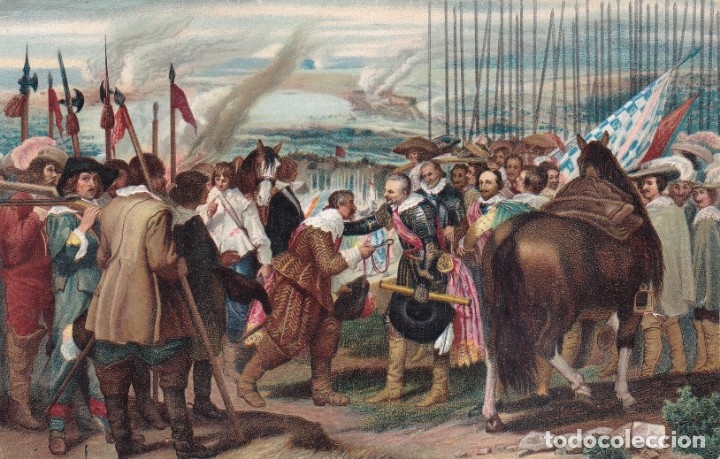
The immediate threat to Ukraine having been lifted and with the war going on and on, history shows that one out of two opposed things are likely to happen.
First, the two sides may agree, either explicitly or tacitly, on a certain set of rules to govern their behavior. As by not employing certain weapons, notably in the West, poison. As by not combating certain classes of people (known, in the middle ages, as “innocents,”) and more or less leaving them alone. As by recognizing protected areas (often such as are considered holy, such as churches) where those innocents may find refuge. As by exchanging prisoners (often one of the first things they agree on). And as by recognizing the value of long-term assets (known, today, as “infrastructure”) such as fruit trees, cattle, canals, bridges, and the like.
Let me be clear: very few of these and other cases resulted from sheer goodness of heart on the part of the belligerents. In this as in other respects, what counts is calculation concerning each side’s interests. One of the most instructive instances of the way things worked occurred during the Dutch Revolt, alias the Dutch War of Independence, which started in 1568 and lasted, with one major interruption between 1609 and 1612, until 1648. Right at the beginning captured Dutch leaders, specifically two well-known noblemen (Egmont and Horne) were treated as rebels and executed by the Spanish commander in chief, the fearsome Duke of Alba. In 1576 the sack of Antwerp, known as the Spanish Fury, may have caused the death of no fewer than 17,000 of the city’s inhabitants. By 1625, things had got to the point where one of Alba’s successors, Ambrosio Spinola, not only accepted the surrender with honor of the important city of Breda but treated the defeated Dutch city commander, Justin Nassau, with extraordinary respect and dignity. Later the act of surrender was painted by one of the greatest artists of the age, Diego Velazaquez. Far from being an isolated case, it was based on a similar one by Rubens. Both contemporaries and subsequent critics agreed that it was fairly accurate. As one of them wrote, Velazquez’s masterpiece “demonstrates the glimpses of humanity that can be exposed as a result of the war and commends Spinola’s consideration for Nassau and the Dutch army.”
Not by accident did the Dutch jurist Hugo Grotius write his de Jure Belli ac Pacis, the most famous treatise ever on the topic, during the same year. There is, however, another possibility. Entering a war the troops, especially fresh ones with no experience of how frightful it really is, may be quite innocent. Innocent, they may find it hard to change their ordinary civilian behavior in favor of ruthlessly killing and destroying. For me personally, the nature of the problem was brought home by a conversation I had years ago with an Israeli battalion commander who took a critical part in the ferocious battles that kept the Golan Heights for Israel back in 1973. At first, he said, my men, most of them 20-21 years old and inexperienced, were so careful that they did not dare drive their tanks over the irrigation pipes that dotted the terrain. Very soon, though, all such considerations were flung aside. They did what had to be done and, at times, what did not need to be done. Including some things he, the battalion commander, did not want to talk about but which, many years later, still made him shudder.
To generalize on this, war is the province of intense, often maniacal, excitement. Not to mention hatred, suffering, pain, death, and mourning. Often the longer it lasts the more powerful these emotions; making the fighting harder and harder to control and carrying the danger turning it into an orgy of violence in which men no longer know what they are doing. The abovementioned Spanish Fury is one notable example of this. But there are plenty of others; just think of the terrible scene in book XXI of the Iliad where Achilles, having suffered the loss of his friend Patroclus, goes on a killing spree unequalled in the whole of literature. Such as, in the end, causes nature, in the form of the river Scamander, put an end to the slaughter by rising and trying to drown him.
At times the atrocities were planned. The Romans in particular developed sacking cities into a fine art. Putting up guards so as to prevent surprises, dividing the area into sections under strict command, and assigning troops to each one so as to ensure they did not start fighting each other over the booty. At times they were the result of the troops running out of hand, or so the responsible commanders, such as Titus during his destruction of the Temple in Jerusalem in 70 CE (as related by Josephus) and Wallenstein at Magdeburg in 1635, later claimed. At times they helped the cause, at times they did the opposite. To return to the Spanish Fury, historians have often taken it for a turning point that persuaded both sides that they had no choice but to fight on. Remarkably the two processes, the one that leads to war being humanized to some extent and the one that leads in the other direction, may proceed simultaneously.
To return to the present, the brutality of the Russian-Ukrainian War does not need to be recounted. On the other hand, we have seen several attempts to exchange prisoners and keep on exporting grain from Odessa and other ports. As of 2 December 2022, over 12 million tons of grain and other foodstuffs had been exported via the Black Sea Grain Initiative. Above all, Ukrainian claims notwithstanding there has been neither a Russian attempt to destroy the huge nuclear complex at Zaporizhzhia nor a great rise in radiation in the surrounding countryside. If there has been “nuclear terror,” then it seems to have been very limited indeed.
So which will it be?
